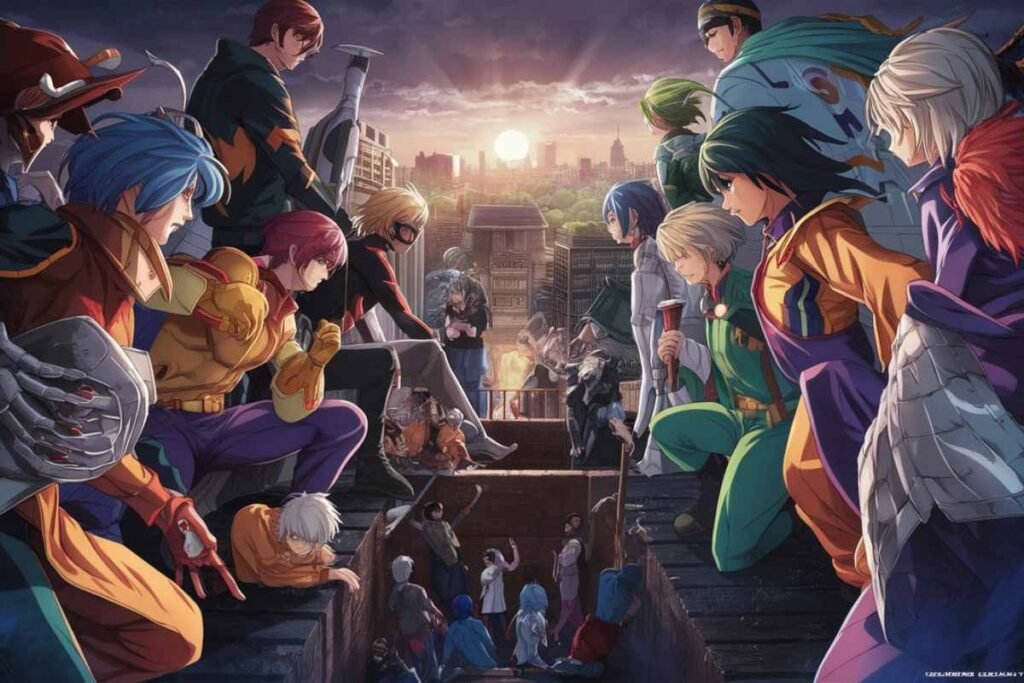Table of Contents
Few names in the realm of literature evoke as much fascination, intrigue, and sometimes intimidation as that of James Joyce.
Widely regarded as one of the most influential writers of the 20th century, Joyce’s works are renowned for their complexity, innovation, and profound exploration of the human condition.
From the sprawling epic of “Ulysses” to the enigmatic flow-of-consciousness narrative of “Finnegans Wake,” Joyce’s oeuvre continues to captivate and perplex readers around the world.
In this article, we embark on a journey to unravel the essence of Joyciano the unique experience of engaging with Joyce’s literary masterpieces.
Unraveling the Narrative Tapestry: A Closer Look at Joyce’s Works

Central to the Joyciano experience is delving into the intricate narrative tapestry that Joyce weaves in his novels.
Take, for instance, “Ulysses,” often hailed as Joyce’s magnum opus. Set in Dublin over the course of a single day, the novel follows the mundane yet extraordinary adventures of Leopold Bloom and Stephen Dedalus.
Through its richly detailed prose and innovative narrative techniques, “Ulysses” offers a panoramic view of human life, encompassing themes of love, loss, identity, and the search for meaning.
Similarly, “Finnegans Wake” presents readers with a linguistic labyrinth unlike any other. Written in a dense, multilayered style that Joyce himself referred to as “the night language,” the novel defies traditional storytelling modes.
Instead, it invites readers to immerse themselves in a dreamscape where language mutates, meanings blur, and the boundaries between reality and fantasy dissolve.
Engaging with “Finnegans Wake” is to embark on a surreal journey through the depths of the subconscious, where every word is pregnant with multiple interpretations.
The Joyciano Aesthetic: Embracing Complexity and Ambiguity
At the heart of the Joyciano experience lies an appreciation for complexity and ambiguity. Joyce’s works abound with intricate wordplay, obscure allusions, and layers of meaning that reveal themselves only upon careful scrutiny.
Rather than offering easy answers or neatly resolved plotlines, Joyce challenges readers to grapple with uncertainty and embrace the inherent ambiguity of life.
This embrace of complexity extends beyond the textual level to encompass broader thematic concerns.
Joyce’s novels are populated by characters who defy simple categorization, existing in a state of perpetual flux and transformation.
In “Ulysses,” for example, the character of Molly Bloom embodies a multiplicity of identities, her stream-of-consciousness monologue reflecting the fragmented nature of subjective experience.
Similarly, the figure of HCE in “Finnegans Wake” is shrouded in myth and mystery, his identity constantly shifting as he is reinvented across different cultural contexts.
Navigating the Literary Terrain: Challenges and Rewards

Engaging with Joyce’s works can be a daunting prospect, requiring readers to navigate a dense thicket of allusions, puns, and linguistic acrobatics.
Indeed, many first-time readers of “Ulysses” or “Finnegans Wake” find themselves bewildered by the sheer density of the prose and the apparent lack of a clear narrative thread. Yet, for those willing to invest the time and effort, the rewards are manifold.
One of the most rewarding aspects of the Joyciano experience is the sense of intellectual stimulation that Joyce’s works provide.
Whether unraveling the myriad references to classical literature in “Ulysses” or deciphering the cryptic wordplay of “Finnegans Wake,” engaging with Joyce’s texts is a deeply enriching endeavor that rewards close reading and careful attention to detail.
Moreover, Joyce’s works offer a window into the historical, cultural, and social context of early 20th-century Ireland.
From the bustling streets of Dublin to the political upheavals of the Irish nationalist movement, Joyce’s novels offer a vibrant portrait of a society in transition.
By immersing ourselves in Joyce’s fictional universe, we gain insight into the complexities of Irish identity and the broader currents of European modernism.
The Legacy of Joyciano: Influence and Inspiration

More than a century after his heyday, James Joyce’s influence continues to reverberate throughout the literary world.
Writers as diverse as Samuel Beckett, Jorge Luis Borges, and Salman Rushdie have cited Joyce as a major influence on their work, testifying to the enduring relevance and power of his writing.
Moreover, Joyce’s experimental approach to language and narrative continues to inspire writers seeking to push the boundaries of literary form.
From the fractured narratives of postmodern fiction to the linguistic pyrotechnics of contemporary experimental literature, Joyce’s legacy can be felt in the work of writers exploring new modes of expression and representation.
Yet perhaps the most enduring aspect of the Joyciano legacy is its ability to provoke thought, challenge assumptions, and expand our understanding of what literature can achieve.
In an age of increasing specialization and fragmentation, Joyce’s insistence on the interconnectedness of all things reminds us of the profound unity of human experience. In the words of Stephen Dedalus in “Ulysses,” “I am, a stride at a time.”
Conclusion
In conclusion, the Joyciano experience is a journey unlike any other a journey that invites us to grapple with complexity, ambiguity, and the inexhaustible richness of the human imagination.
Whether we are navigating the labyrinthine prose of “Ulysses” or surrendering to the dreamlike logic of “Finnegans Wake,” engaging with Joyce’s works is an endlessly rewarding enterprise that challenges us to expand our horizons and deepen our understanding of the world and ourselves.
So let us embrace the Joyciano journey with open minds and adventurous spirits, for in the words of James Joyce himself, “The supreme question about a work of art is out of how deep a life does it spring.”
FAQs
What makes James Joyce’s works so influential?
James Joyce’s works stand out for their complexity, innovation, and deep insight into the human condition. With intricate narratives and profound themes, Joyce’s writings captivate and challenge readers globally.
Are Joyce’s novels difficult to understand?
Joyce’s novels, like “Ulysses” and “Finnegans Wake,” are challenging because of their complex prose, wordplay, and literary references. Yet, with patience and attentive reading, one can discover deep meaning and richness in his works.
What themes does James Joyce commonly explore in his works?
James Joyce’s works explore themes like love, loss, identity, and the quest for meaning, highlighting the complexities of human life. His stories offer deep insights into the human condition.
How has James Joyce’s legacy influenced contemporary literature?
James Joyce’s innovative use of language and story has inspired contemporary writers to explore new literary forms and expressions. His impact is evident in various movements and styles, including postmodern fiction and experimental literature.
Is it necessary to have prior knowledge of Joyce’s background to appreciate his works?
Understanding James Joyce’s background and the historical context of his works can enhance appreciation but isn’t essential. Readers can still enjoy and find meaning in his novels without extensive knowledge, though knowing literary references helps with deeper comprehension.
What is the enduring appeal of the Joyciano experience?
The Joyciano experience explores human imagination and consciousness, challenging assumptions and inspiring thought. It broadens our understanding of literature and the human condition, showing how Joyce’s works reveal the interconnectedness of life and art.


